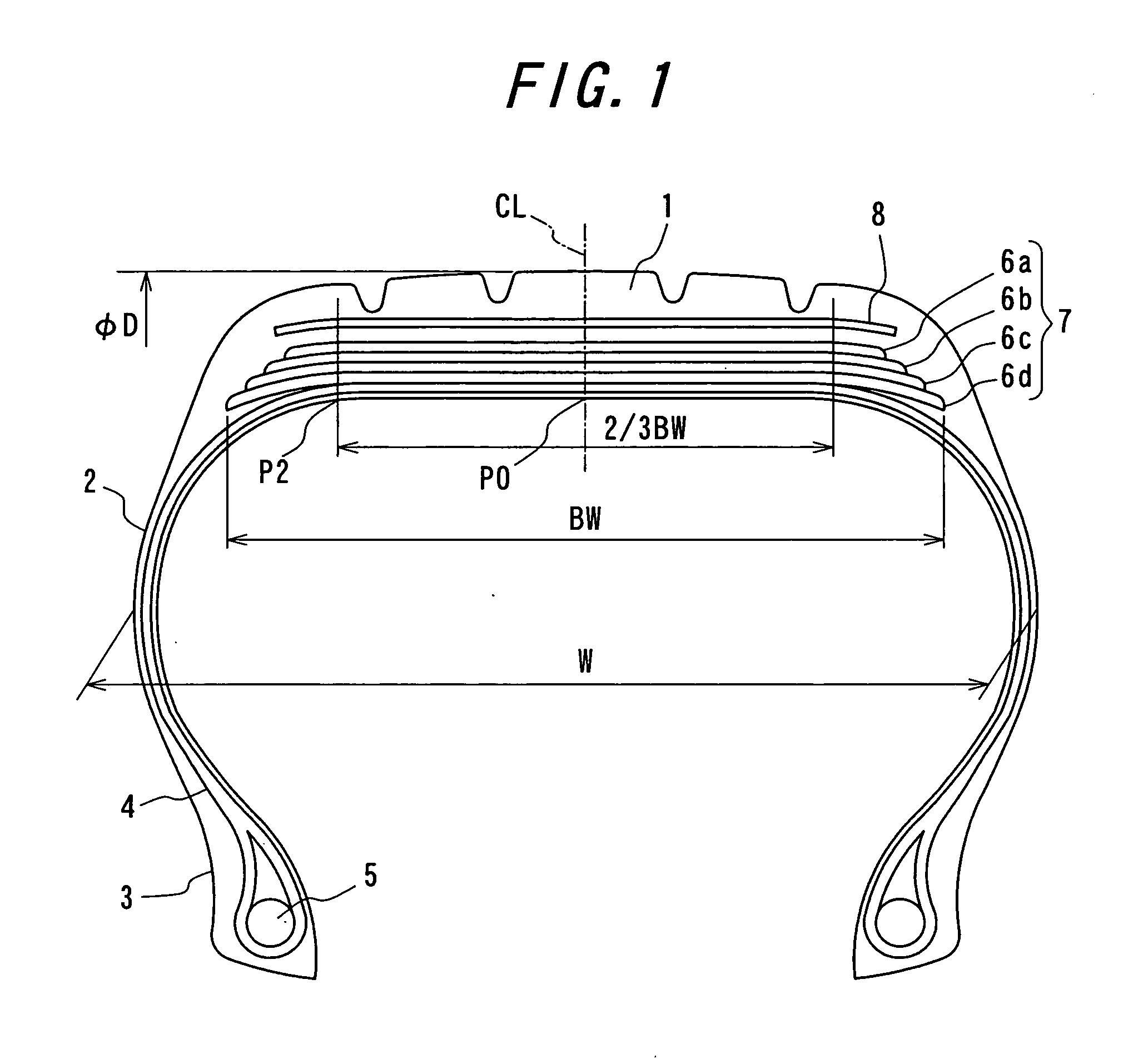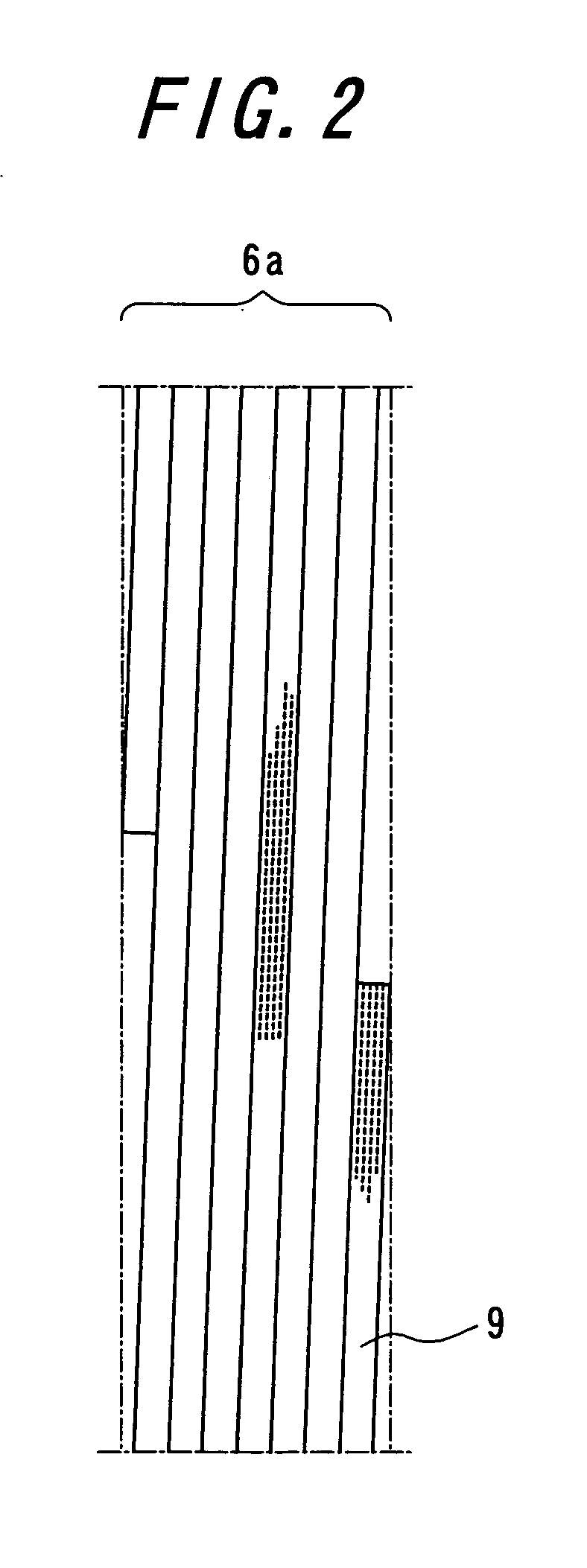Radial tire for airplane
a technology for airplanes and tires, applied in aircrafts, transportation and packaging, yarn, etc., can solve the problems of poor heat shrinking property of aramid fiber cords, difficult to completely correct a slight non-uniform strength between the cords, and difficult to equalize the tension of belt cords in the pressure test for measuring the safety ratio of tires
- Summary
- Abstract
- Description
- Claims
- Application Information
AI Technical Summary
Benefits of technology
Problems solved by technology
Method used
Image
Examples
Embodiment Construction
[0018]FIG. 1 is a diagrammatically cross-section view of a radial tire for airplane according to the invention. In FIG. 1, numeral 1 is a tread portion, numeral 2 a pair of sidewall portions continuously extending inward from side ends of the tread portion 1 in a radial direction, and numeral 3 a bead portion continuously arranged at an inner peripheral side of each of the sidewall portion 2.
[0019] Also, a radial carcass 4 comprised of at least one carcass ply is toroidally extended between both the bead portions 3. The radial carcass 4 reinforcing the portions 1, 2 and 3 is arranged so that each side portion thereof is wound around a circular ring-shaped bead core 5 embedded in the bead portion 3 from inside toward outside.
[0020] On an outer periphery of a crown portion of the radial carcass 4 is disposed a belt 7 comprised of plural belt layers 6. Moreover, a belt protection layer 8 may be arranged on an outside of the belt in the radial direction.
[0021] In the invention, when ...
PUM
| Property | Measurement | Unit |
|---|---|---|
| angle | aaaaa | aaaaa |
| length | aaaaa | aaaaa |
| viscosity | aaaaa | aaaaa |
Abstract
Description
Claims
Application Information
 Login to View More
Login to View More - R&D
- Intellectual Property
- Life Sciences
- Materials
- Tech Scout
- Unparalleled Data Quality
- Higher Quality Content
- 60% Fewer Hallucinations
Browse by: Latest US Patents, China's latest patents, Technical Efficacy Thesaurus, Application Domain, Technology Topic, Popular Technical Reports.
© 2025 PatSnap. All rights reserved.Legal|Privacy policy|Modern Slavery Act Transparency Statement|Sitemap|About US| Contact US: help@patsnap.com



